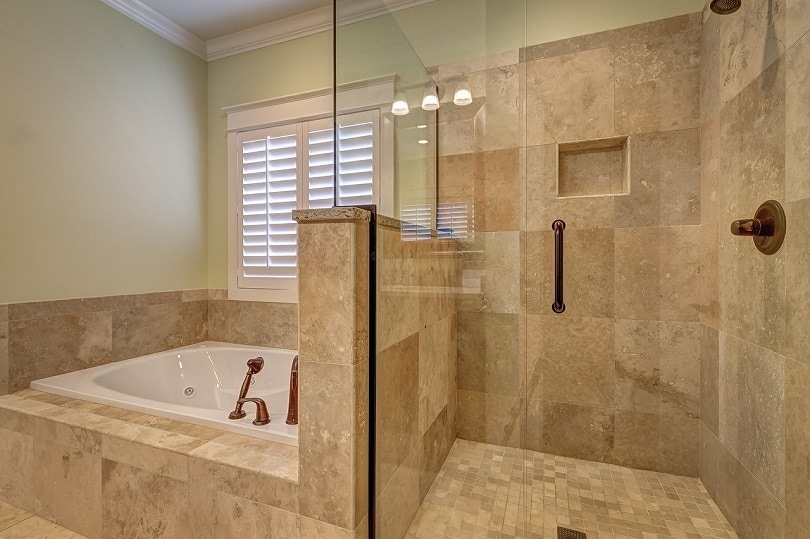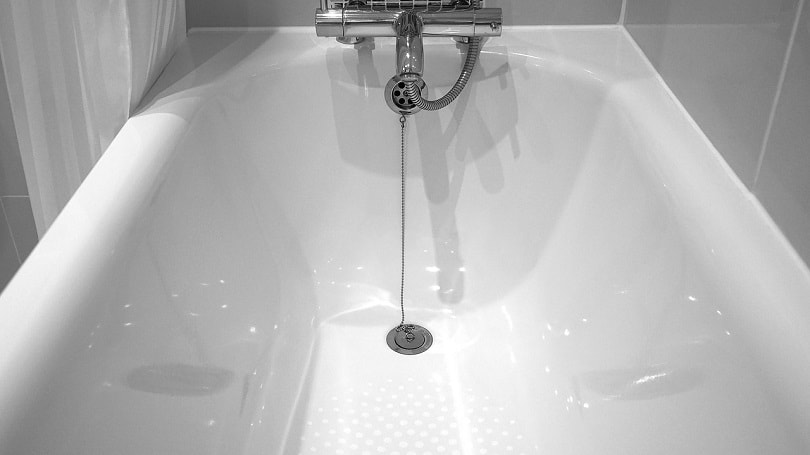Bath vs Shower: Which Has the Highest Water Usage?
-

- Last updated:

Many people love to relax by drawing a hot bath to soak away the stress of the day. Conversely, some people prefer the massaging jets of the shower head. Whether you just need to clean yourself off or you’re looking for a quiet moment of respite from the world, shower and bath time is a consistent part of all of our lives.
You may be surprised to find out that the average shower in the United States lasts just over eight minutes and consumes about 17 gallons of water. While this may not seem like a lot, when you realize that most of us shower every day, you’ll see those numbers add up fast through the course of a year. When water usage increases, so does the water bill. This can leave you wondering whether a bath or shower is a more economical means of cleansing yourself from the day’s work and worry.
Let’s dive into it and see which one is wasting more water.
Bathing

The average-sized bathtub holds about 80 gallons of water. Larger soaking tubs have become quite popular in recent years, and these can hold upwards of 100 gallons. Of course, most of us aren’t filling the tub to the rim, so you’re using less than this for a standard bath, no doubt. But if we assume that the average person fills the tub halfway to three-quarters of the way with water, that’s still consuming 40-60 gallons of water for a single bath. With an oversized tub, you’re looking at 50-75 gallons instead. Also, consider the capacity of your water heater. In smaller homes, the water heater often has a capacity of just 30-45 gallons of water, so you may run out before your tub is even full.
Showering

As mentioned, the average shower in American households lasts for about eight minutes. Naturally, this varies from person to person and from day to day, but eight minutes is the average. Across the country, 2.5 GPM is the maximum flow rate for shower heads, and in some states, it’s even lower. With a max-flow 2.5 GPM shower head, the same eight-minute shower uses 20 gallons of water. Even if we assume a very long shower of 15 minutes and a max-flow shower head, you’ll only use 37.5 gallons, still less than the average bath at just half full.
With a more economical shower head such as 2.0 GPM, you’ll only consume 30 gallons for that 15-minute shower. Even more conservative options are available, such as eco-performance shower heads that use as little as 1.5 GPM. Most people aren’t taking a 15-minute shower each day though. Let’s say you take short showers of just five minutes. Even with a 2.5 GPM shower head, you’ll only use 12.5 gallons total. It would take four short showers to equal the amount of water consumed in a single bath.
Which is Best for Water Conservation?
Even assuming a standard-sized tub at only half full, 40 gallons is hefty water consumption. If you were to bathe like that every day, you’d be using 14,600 gallons of water minimum in a single year. For a larger soaking tub that holds 50 gallons at half-capacity, the yearly usage swells to 18,250 gallons. If you fill your tub more than halfway like many people, those usage numbers will be even higher.
Compare that to the average eight-minute shower that uses just 17 gallons of water. Through the course of an entire year, this only adds up to 6,205 gallons of water being used. That’s less than half of what bathing would consume, even if you were conservative with how you fill your tub. If you take longer 15-minute showers with a 2.5 GPM shower head, you’ll still only use 13,687 gallons, almost 1,000 gallons less than when taking baths. If your standard-sized tub gets filled to three-quarters for your baths, then the difference will be even greater.
Final Thoughts
Even if you love a relaxing soak in the bathtub, it should probably be reserved for special occasions. Compared to the average shower, even a half-full bathtub wastes twice as much water. If you were to bathe like this every day, the effect on your water bill could be staggering. Moreover, consider the effect you’re having on the environment. By showering instead of bathing, you could be saving more than 8,000 gallons of water each year. To reduce your impact even more, try using an economical low-flow shower head, which could conserve hundreds more gallons of water for each individual.
- See also: Who Invented the Monkey Wrench?
Featured image credit: GregoryButler, Pixabay
Contents



